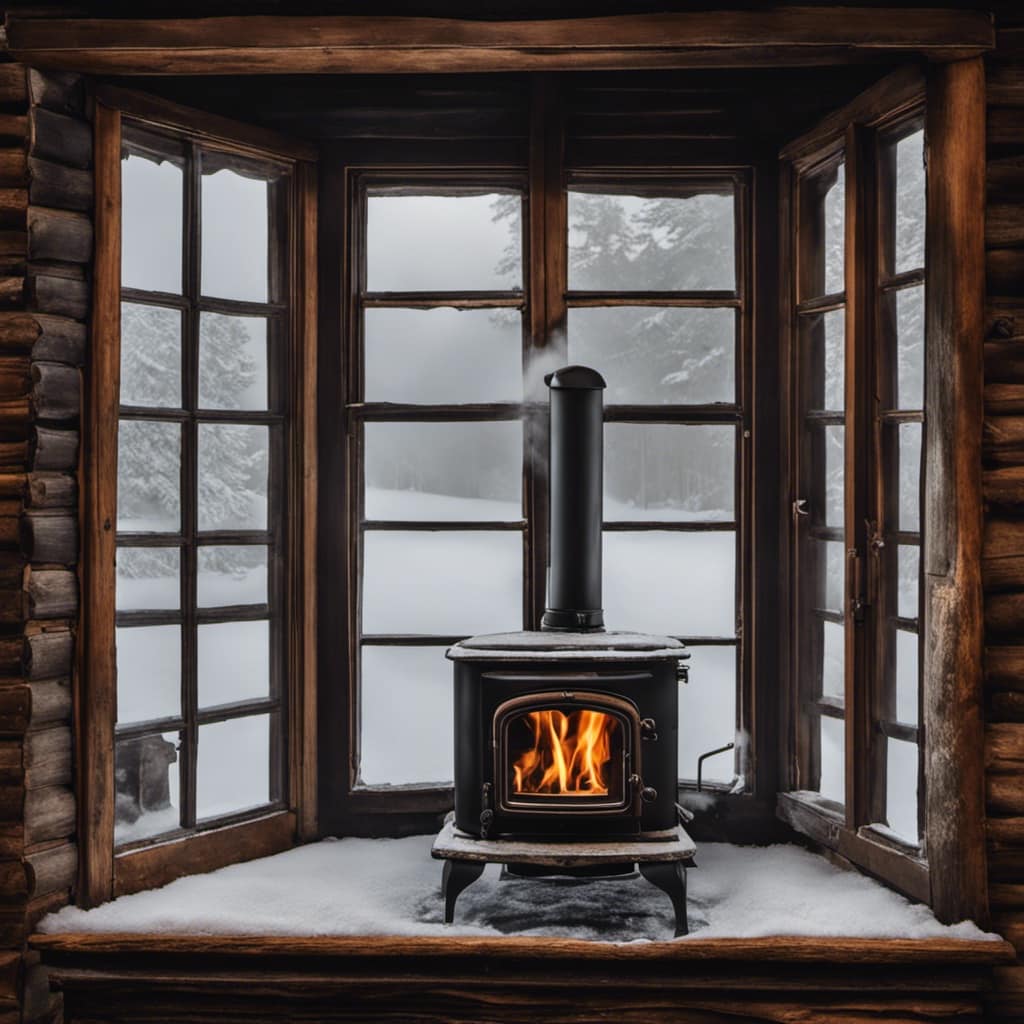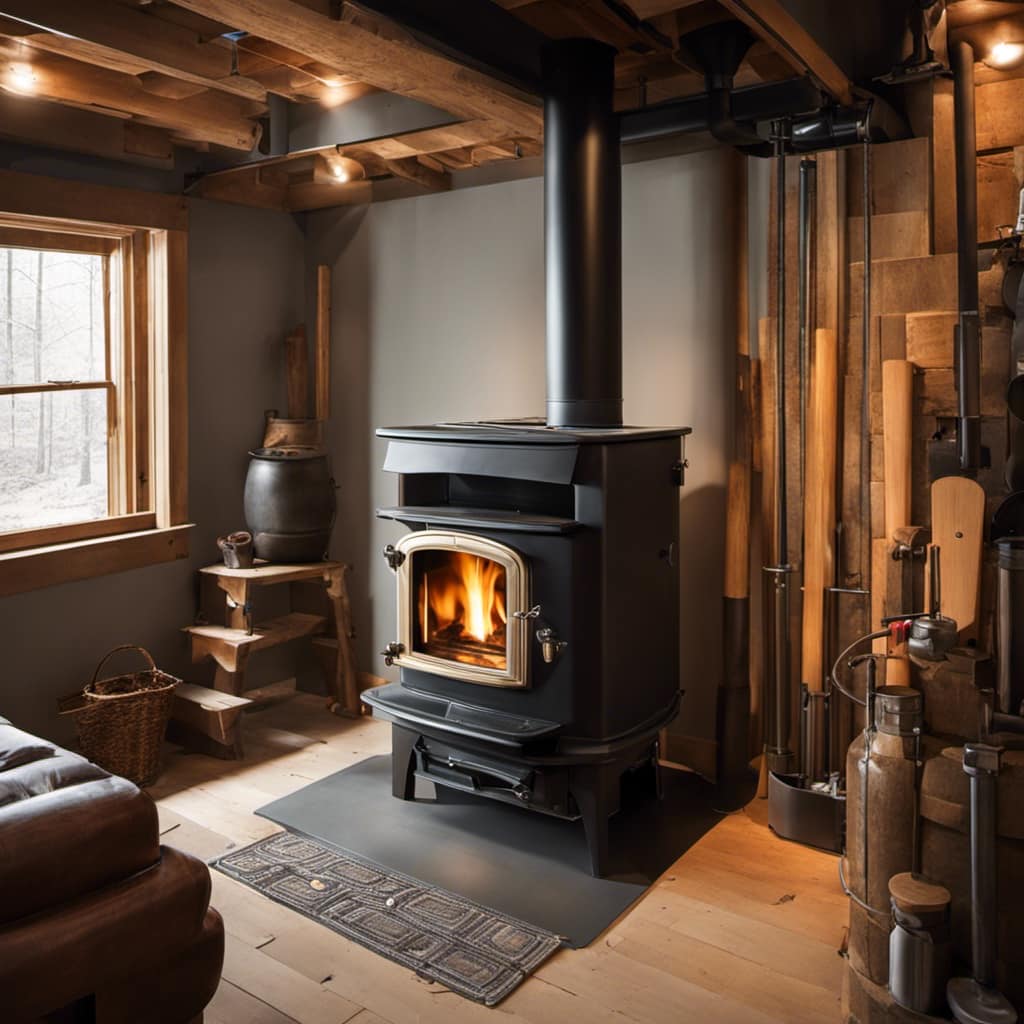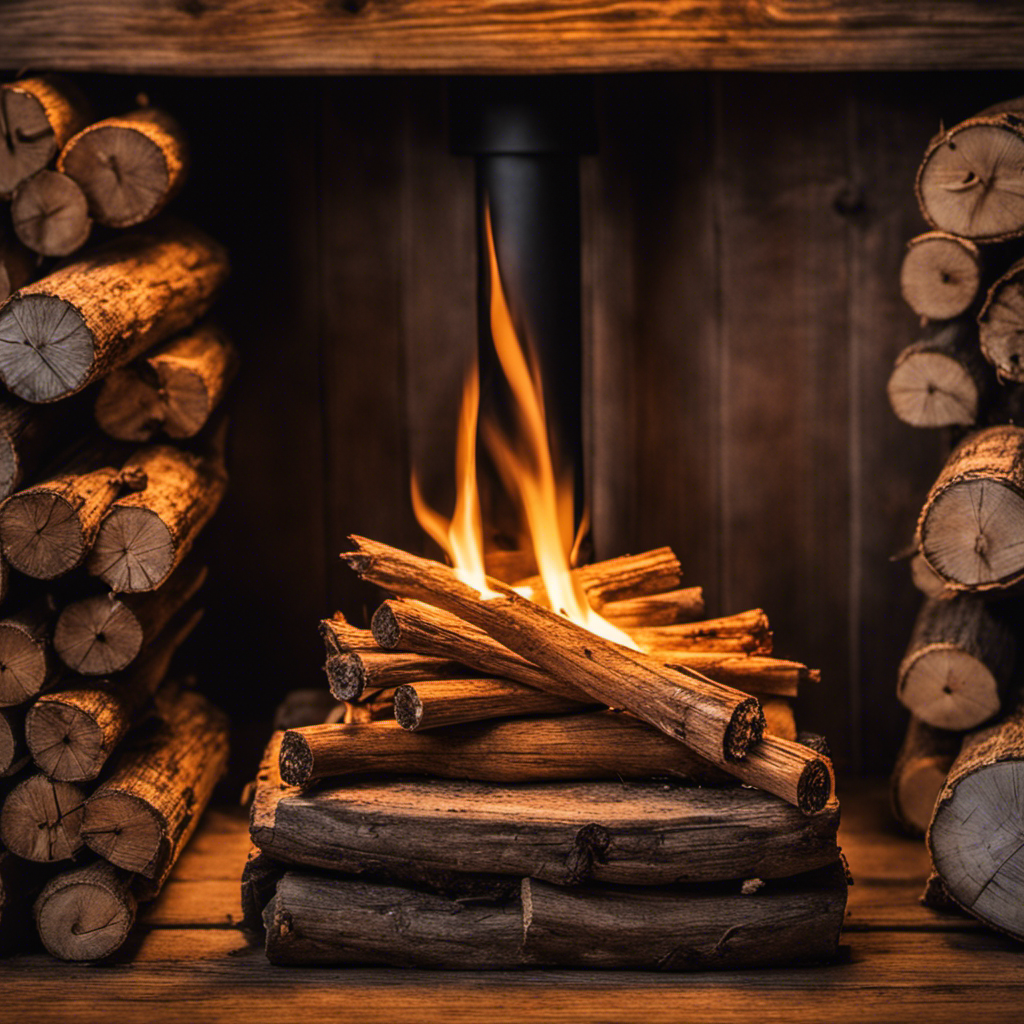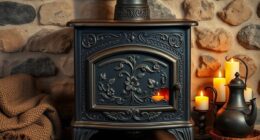I have always been curious about the appropriate safe distance that should be maintained between a wood stove and a wall to prevent any potential hazards.
Well, imagine this: you finally get your dream wood stove installed, only to find out it’s too close to the wall, risking a potential fire hazard.
In this article, we’ll dive into the specific clearance requirements for wood stoves and the factors that influence the distance needed.
Stay tuned for expert fire safety regulations and helpful tips on maintaining proper clearance.
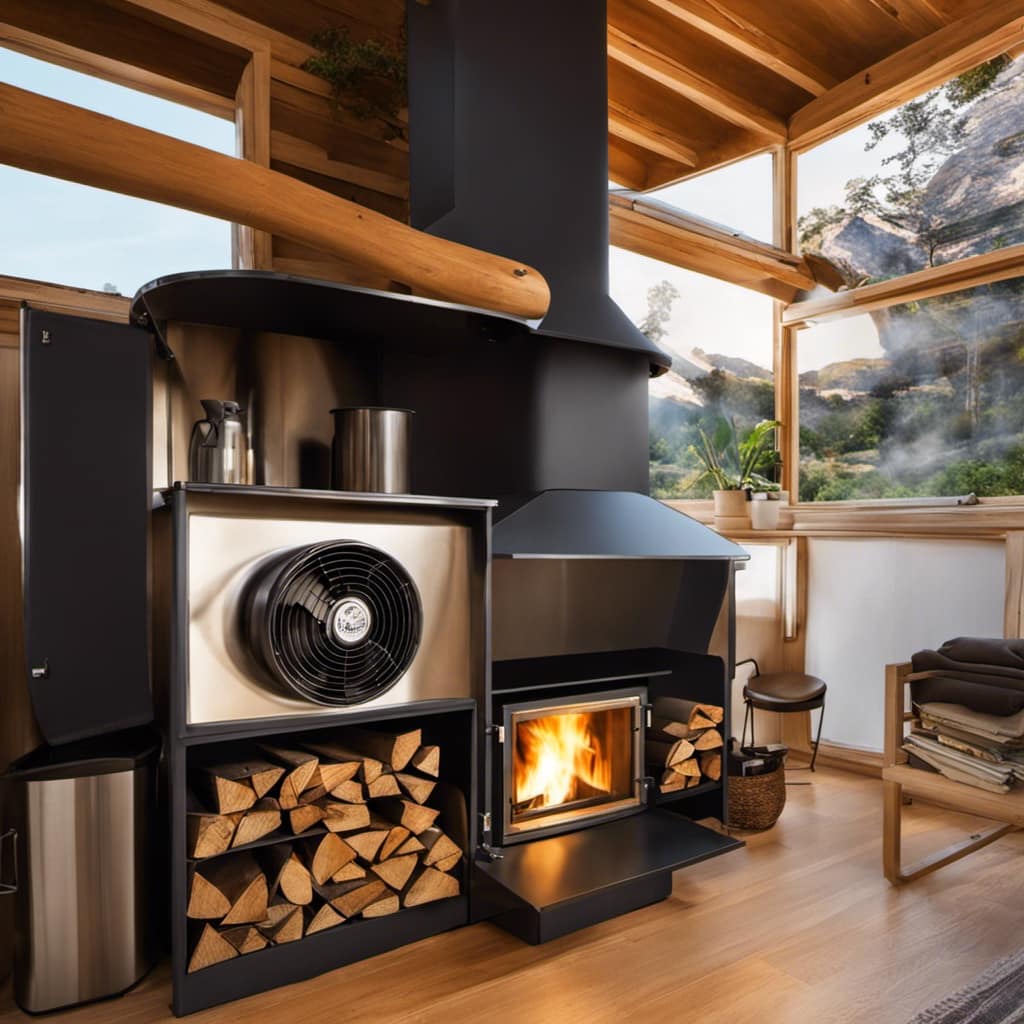
Key Takeaways
- The National Fire Protection Association recommends a minimum clearance of 36 inches between the wood stove and any combustible material.
- Factors such as the stove’s size, type, and location can affect the distance required.
- Following manufacturer guidelines and local building codes is crucial to ensure proper clearance.
- Adequate air circulation and heat distribution in the room are important.
Minimum Clearance Requirements for Wood Stoves
I need to make sure there’s enough clearance between my wood stove and the wall. Safety precautions must be taken into consideration when determining the minimum clearance requirements for wood stoves.
The heat distribution of the stove plays a crucial role in determining this distance. The stove needs adequate space to allow for proper airflow and to prevent any potential fire hazards.
The National Fire Protection Association (NFPA) recommends a minimum clearance of 36 inches between the stove and any combustible material, such as walls or furniture. This distance ensures that the heat produced by the stove doesn’t pose a risk to surrounding objects.
Factors such as the stove’s size, type, and location can also affect the distance required. Therefore, it’s important to carefully consider these factors when determining the appropriate clearance for your wood stove.

Factors Affecting the Distance Between Wood Stove and Wall
Based on the specific factors involved, it’s important to consider the appropriate distance between a wood stove and the wall.
When it comes to fireplace installation and heat distribution, there are several key factors to take into consideration.
Firstly, the type of wood stove being used plays a significant role. Different stoves have different heat outputs and clearance requirements.
Additionally, the construction materials of the wall and the stove’s heat shielding capabilities must be considered.
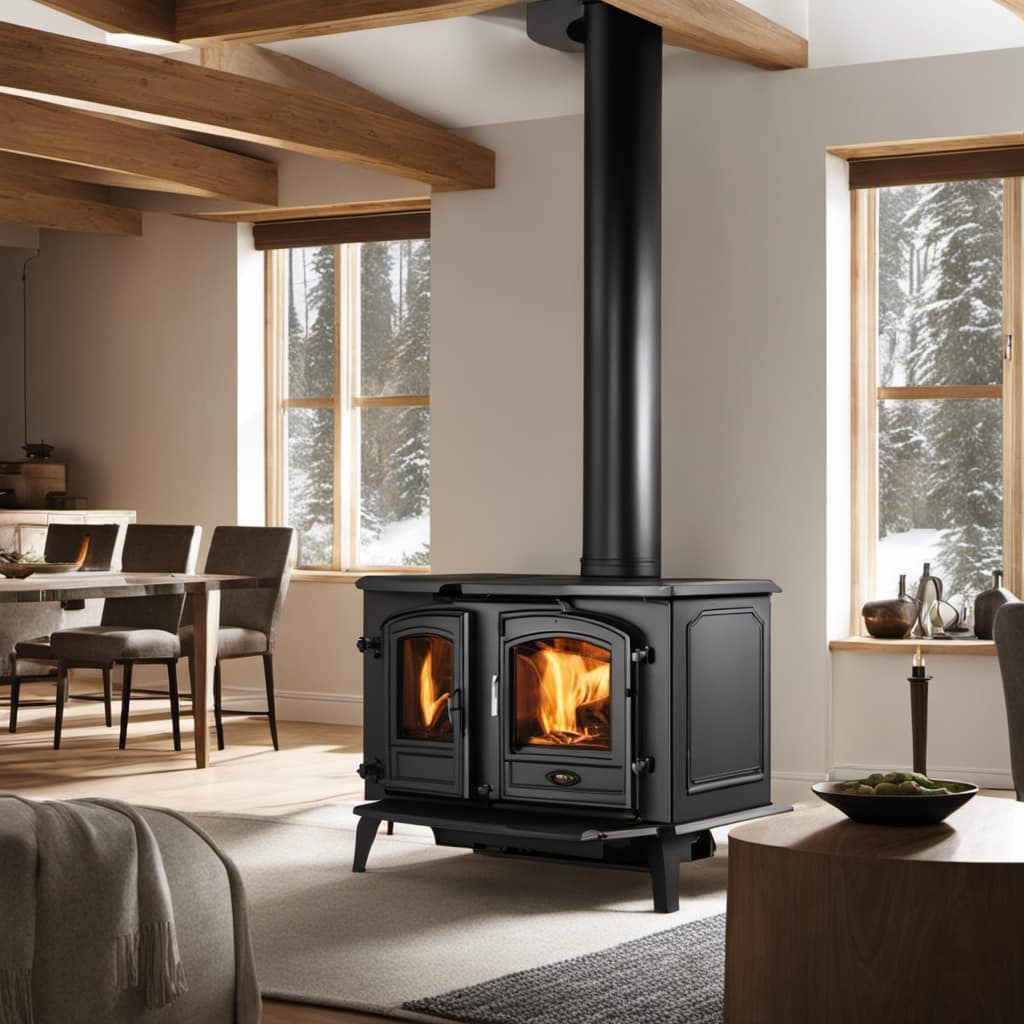
The proximity of flammable materials, such as curtains or furniture, also affects the safe distance.
It’s crucial to follow manufacturer guidelines and local building codes to ensure proper clearance.
Understanding Fire Safety Regulations for Wood Stoves
Understanding the fire safety regulations for wood stoves is crucial to ensure a safe installation. Fire prevention measures and safety guidelines for wood stoves are designed to minimize the risk of fire and protect both the occupants and the property.
These regulations typically include requirements for clearances to combustible materials, such as walls and floors, to prevent heat transfer and potential ignition. Clearances may vary depending on the specific model and manufacturer, so it’s important to consult the manufacturer’s instructions or local building codes for the recommended distances.
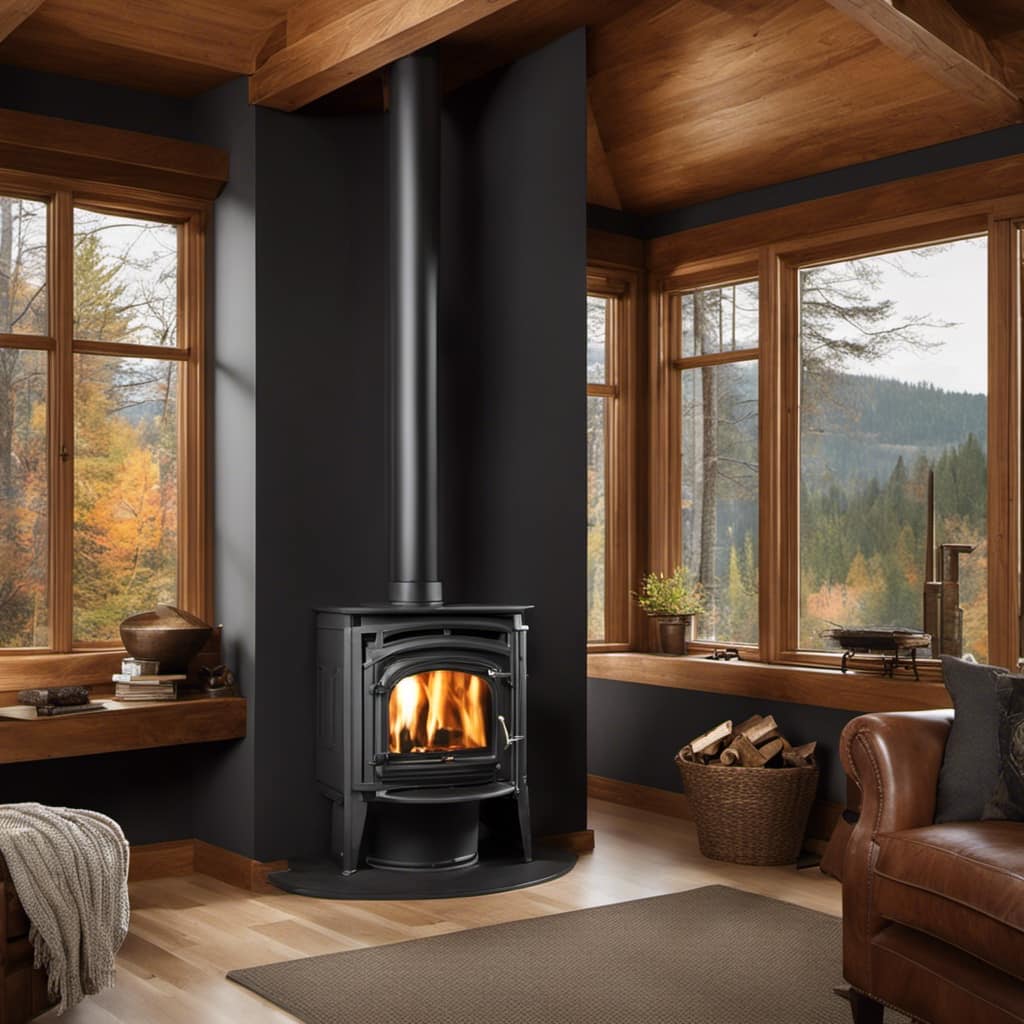
Optimal Placement of Wood Stove in Relation to the Wall
When installing a wood stove, it’s important to consider the recommended distance from the wall to ensure optimal placement. Maximizing heat efficiency is crucial, and placing the stove too close to the wall can hinder its performance.
Here are some common mistakes to avoid:
Not following manufacturer guidelines: Each wood stove comes with specific requirements for clearance from combustible materials. It’s essential to read and follow these guidelines carefully to prevent any potential fire hazards.
Insufficient space for maintenance: Leaving enough space between the stove and the wall allows for easy access during cleaning and maintenance. This ensures that the stove functions properly and remains in good condition.
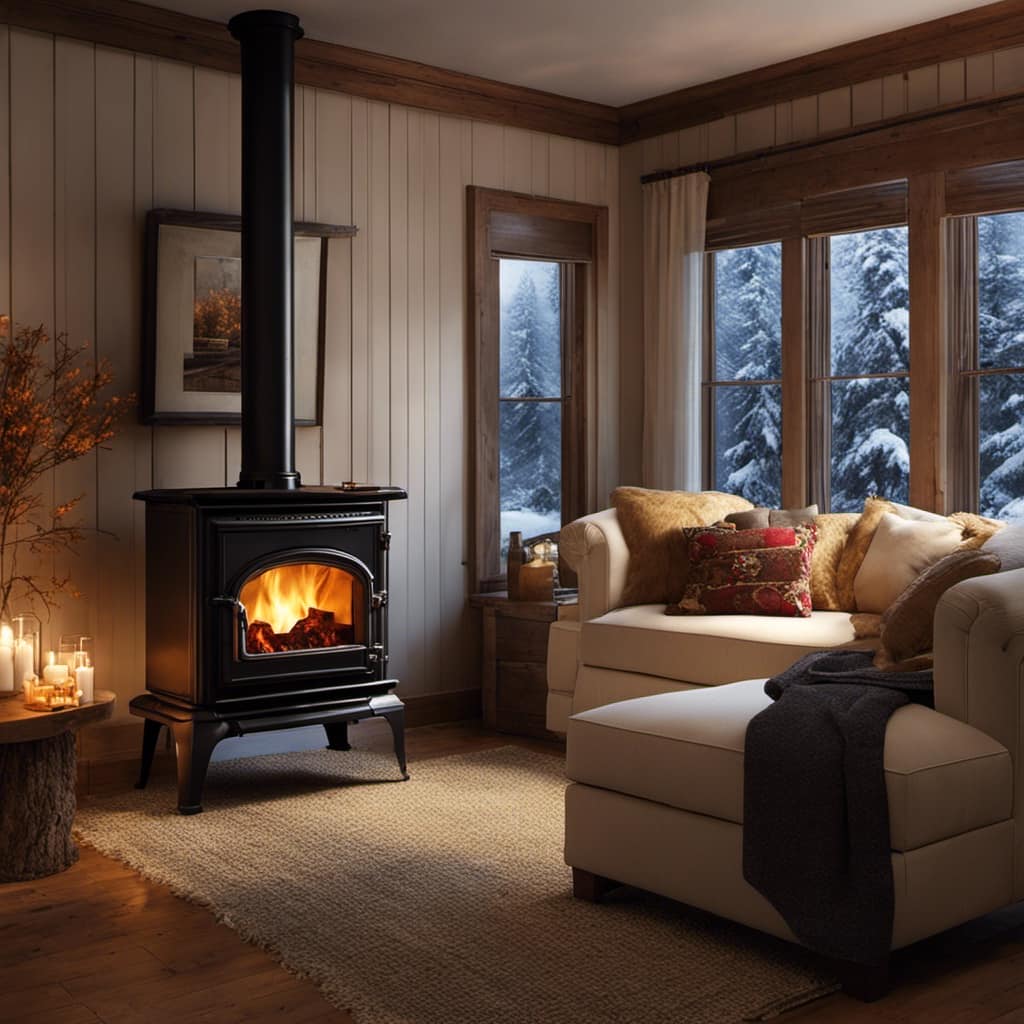
Adequate air circulation: Placing the stove too close to the wall can restrict airflow, reducing the stove’s efficiency. It’s important to maintain proper clearance to allow for proper air circulation and heat distribution in the room.
Tips for Maintaining Proper Clearance Between Wood Stove and Wall
I find it crucial to maintain adequate clearance between my wood stove and the wall to ensure proper airflow and heat distribution.
When it comes to installation, there are a few tips that can help ensure the safety and efficiency of your wood stove.
Firstly, it’s important to check the manufacturer’s guidelines for the recommended clearance distances. These guidelines will vary depending on the type and model of your wood stove.
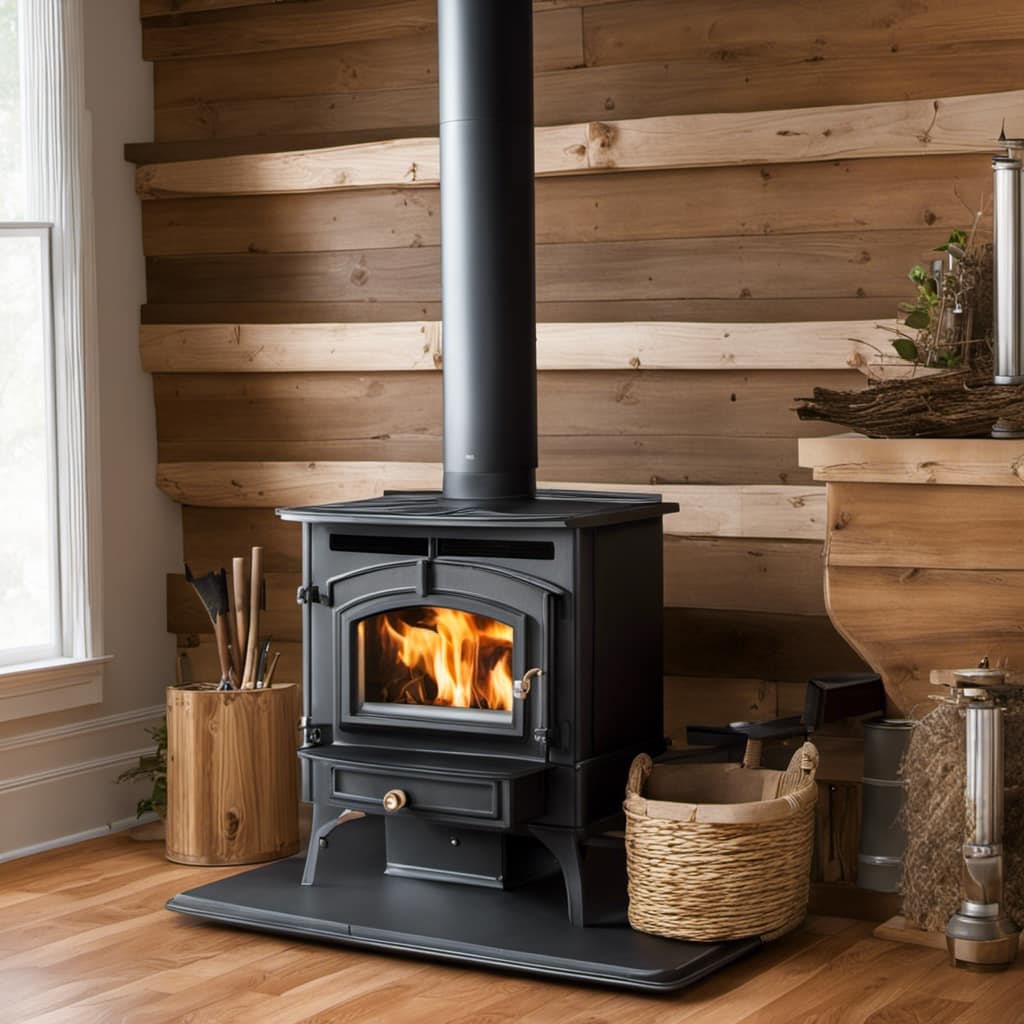
Secondly, ensure that there’s enough space for proper ventilation around the stove. This will help prevent overheating and reduce the risk of fire.
Lastly, consider adding a heat shield or fireproof material on the wall behind the stove to provide an additional layer of protection.
Frequently Asked Questions
Can I Install a Wood Stove Directly Against a Wall if It Meets the Minimum Clearance Requirements?
Yes, you can install a wood stove directly against a wall if it meets the minimum clearance requirements. However, it is important to check the specific guidelines for wood stove clearance and installation to ensure safety.
Are There Any Specific Regulations for the Distance Between a Wood Stove and a Non-Combustible Wall?
Regulations and safety precautions dictate the distance between a wood stove and a non-combustible wall. It’s important to follow these guidelines to ensure proper ventilation, reduce fire hazards, and maintain the overall safety of your home.

Can I Install a Wood Stove in a Corner Against Two Walls?
Sure, I can install a wood stove in a corner against two walls. However, it’s important to consider the regulations regarding the distance between the stove and the walls to ensure safety and prevent any fire hazards.
Do I Need to Provide Additional Clearance if I Have a Heat Shield Installed Behind the Wood Stove?
If I have a heat shield installed behind my wood stove, I still need to provide additional clearance from the walls. However, using a heat shield can help reduce the required distance and provide added protection.
What Are the Consequences of Not Maintaining the Proper Clearance Between a Wood Stove and a Wall?
Not maintaining proper clearance between a wood stove and a wall can have serious consequences. It can lead to overheating, increased risk of fire, and damage to the wall. Safety measures for wood stove installation should always be followed.
What Is the Safe Distance for a Wood Stove to Be from the Wall?
When determining the wood stove ash distance from wall, it’s essential to follow safety guidelines. The recommended safe distance for a wood stove from the wall is typically 36 inches. However, this distance may vary depending on the type of wood stove and local building codes.
Conclusion
In conclusion, it’s crucial to ensure that wood stoves are placed at a safe distance from walls to prevent potential fire hazards. By following the minimum clearance requirements and understanding fire safety regulations, you can enjoy the cozy warmth of your wood stove without compromising your home’s safety.
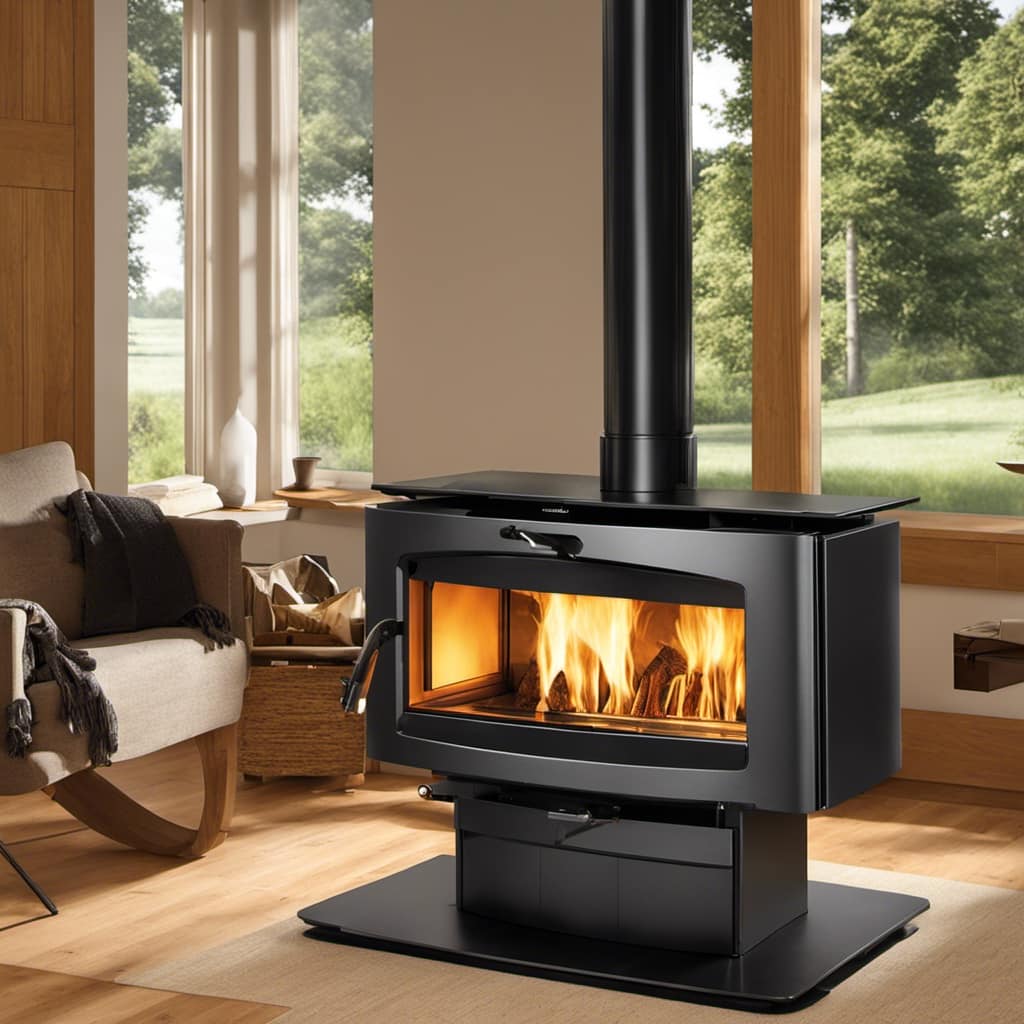
Remember to regularly maintain the proper clearance between your wood stove and the wall to ensure optimal performance and peace of mind. Keep your home warm, cozy, and safe.
Growing up surrounded by the vast beauty of nature, Sierra was always drawn to the call of the wild. While others sought the comfort of the familiar, she ventured out, embracing the unpredictable and finding stories in the heartbeat of nature.
At the epicenter of every remarkable venture lies a dynamic team—a fusion of diverse talents, visions, and passions. The essence of Best Small Wood Stoves is crafted and refined by such a trio: Sierra, Logan, and Terra. Their collective expertise has transformed the platform into a leading authority on small wood stoves, radiating warmth and knowledge in equal measure.


